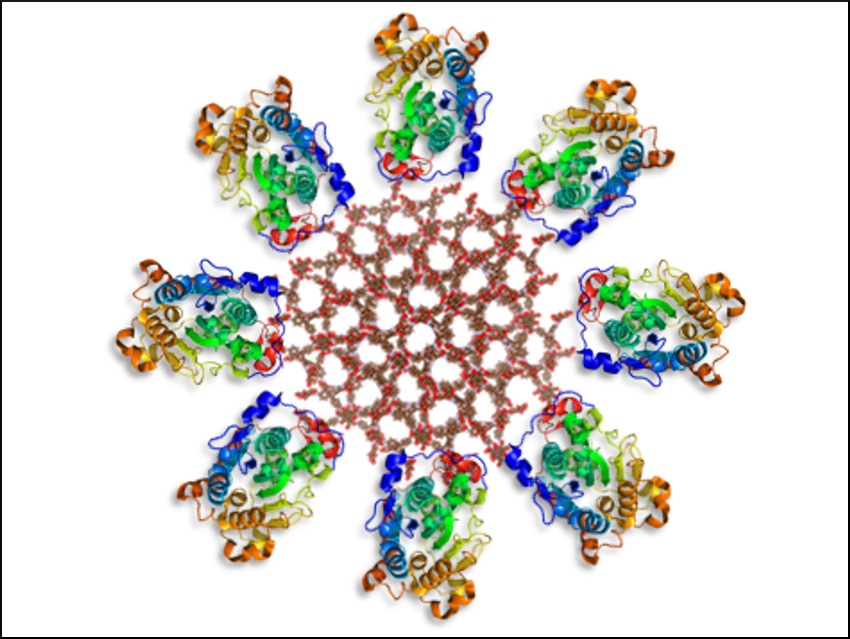Covalent organic frameworks (COFs) are an important class of porous materials with many potential applications. They can be used, e.g., in gas capture and separation or in catalysis.
Pierre M. Esteves, Raoni S. B. Gonçalves, Universidade Federal do Rio de Janeiro, Brazil, and colleagues have used the imine-linked COF PPF‐2 as a platform for the immobilization of the enzyme Candida antarctica lipase B. This enzyme can be used, e.g., for kinetic resolution reactions of alcohols, amines, lactones, or carboxylic acids. The immobilization of enzymes on a heterogeneous substrate allows for convenient handling and the simple separation of the biocatalyst from the reaction medium. It also often enhances enzyme stability.
The team evaluated three different strategies for enzyme immobilization: physical adsorption, covalent attachment on the surface of the COF using a free aldehyde group, and covalent attachment to an epichlorohydrin-based linker added to the COF’s surface. In the covalently linked variants, only the external surface of the material was altered by the enzyme immobilization. Physical adsorption led to a substantial reduction in surface area and pore volume. The team attributes this to denatured enzymes that are adsorbed into the pores. This type of catalyst also has a lower activity than the covalently linked ones.
The researchers found that their COF-immobilized enzymes have an improved performance compared with Novozyme 435, a commercially available immobilized enzyme, in oleic acid esterification. The COF-immobilized enzymes also achieved solid results in the kinetic resolution of rac-1-phenylethanol. This work demonstrates that COFs can act as platforms for enzyme immobilization and provide a compatible environment for enzyme activity.
- Enzyme‐Decorated Covalent Organic Frameworks as Nanoporous Platforms for Heterogeneous Biocatalysis,
Felipe L. Oliveira, Stefania P. Souza, Jonathan Bassut, Heiddy M. Álvarez, Yunier Garcia‐Basabe, Rodrigo O. M. Alves de Souza, Pierre M. Esteves, Raoni S. B. Gonçalves,
Chem. Eur. J. 2019.
https://doi.org/10.1002/chem.201903807




